Around The Web
Clean energy industry scholarship to help build next generation of board directors
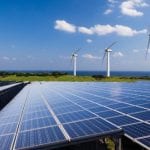 The Clean Energy Council has opened applications for the fourth annual Women in Renewables Scholarship, a program which aims to strengthen gender diversity at the leadership level across the industry.
The Clean Energy Council has opened applications for the fourth annual Women in Renewables Scholarship, a program which aims to strengthen gender diversity at the leadership level across the industry.
The post Clean energy industry scholarship to help build next generation of board directors appeared first on RenewEconomy.
Local Government Super is the sole Australian signatory on the Green Bond Pledge
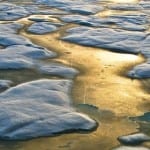 The Green Bond Pledge is an international declaration that all bonds financing long-term infrastructure and capital projects need to address environmental impacts and climate risk
The Green Bond Pledge is an international declaration that all bonds financing long-term infrastructure and capital projects need to address environmental impacts and climate risk
The post Local Government Super is the sole Australian signatory on the Green Bond Pledge appeared first on RenewEconomy.
Simec Atlantis reveals world’s largest tidal turbine
 Simec Atlantis- the Australian ocean energy company now part of Sanjeev Gupta's business empire - says new tidal power turbine will be largest of its type in the world.
Simec Atlantis- the Australian ocean energy company now part of Sanjeev Gupta's business empire - says new tidal power turbine will be largest of its type in the world.
The post Simec Atlantis reveals world’s largest tidal turbine appeared first on RenewEconomy.
Solar Orbiter: Spacecraft to leave UK bound for the Sun
Coal and hydro generators struggle after lightning strikes twice on network
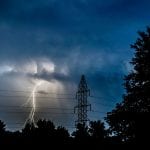 Two big coal and hydro plants did not cope well with the events caused by lightning strikes last month, but market operator pleased with South Australia emergency control plan that includes the Tesla big battery.
Two big coal and hydro plants did not cope well with the events caused by lightning strikes last month, but market operator pleased with South Australia emergency control plan that includes the Tesla big battery.
The post Coal and hydro generators struggle after lightning strikes twice on network appeared first on RenewEconomy.
Solar becomes biggest contributor to South Australia grid in middle of day
 Solar becomes biggest contributor to South Australia grid in middle of the day, signalling the next phase of the state's transition to 100 per cent renewables.
Solar becomes biggest contributor to South Australia grid in middle of the day, signalling the next phase of the state's transition to 100 per cent renewables.
The post Solar becomes biggest contributor to South Australia grid in middle of day appeared first on RenewEconomy.
Incumbents fail – so are we wasting our time on sustainability?
 The scale and speed of change needed on sustainability means many and perhaps most of today’s major old companies simply won’t get there. So, are we wasting our time?
The scale and speed of change needed on sustainability means many and perhaps most of today’s major old companies simply won’t get there. So, are we wasting our time?
The post Incumbents fail – so are we wasting our time on sustainability? appeared first on RenewEconomy.
SolarReserve signs manufacturing MOU for solar tower project, but financing delayed
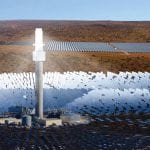 SolarReserve sings MOU with local outfit Heliostat SA, to manufacture and assemble the heliostat components for the world-leading 150MW solar tower and molten salt storage facility proposed for Port Augusta.
SolarReserve sings MOU with local outfit Heliostat SA, to manufacture and assemble the heliostat components for the world-leading 150MW solar tower and molten salt storage facility proposed for Port Augusta.
The post SolarReserve signs manufacturing MOU for solar tower project, but financing delayed appeared first on RenewEconomy.
In Netherlands, every McDonalds Drive-In will have EV charging stations
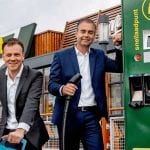 Nuon to provide fast food chain McDonald’s with EV charging stations at all of the franchise’s McDrive locations.
Nuon to provide fast food chain McDonald’s with EV charging stations at all of the franchise’s McDrive locations.
The post In Netherlands, every McDonalds Drive-In will have EV charging stations appeared first on RenewEconomy.
BMW’s vision of the future? An electric SUV you may not drive
 BMW chooses the fuselage of a cargo plane in New York to unveil latest vision of the future of cars: an intelligent, autonomous, electric SUV.
BMW chooses the fuselage of a cargo plane in New York to unveil latest vision of the future of cars: an intelligent, autonomous, electric SUV.
The post BMW’s vision of the future? An electric SUV you may not drive appeared first on RenewEconomy.
CP Daily: Monday September 17, 2018
Number of dirty diesels on road still growing, report shows
Three years after the Dieselgate scandal erupted, number of highly polluting diesel vehicles on Europe’s roads has risen to 43 million
The number of dirty diesel vehicles pumping out toxic emissions on Europe’s streets is still rising three years after the Dieselgate scandal began, according to a new report. More than 7m such cars and vans remain on UK roads alone.
There were 29m diesel vehicles whose emissions on the road were significantly higher than official laboratory-based EU limits when the diesel scandal erupted in September 2015. But that has now risen by to 43m, according to analysis by the group Transport & Environment (T&E). France has the most dirty diesels on the road, with 8.7m, followed by Germany’s 8.2m and the UK’s 7.3m.
Continue reading...EU Market: EUAs jolt towards €21 as prices continue recovery from massive sell-off
Project Officer- Climate, ShareAction – London
Climate Change Specialist, WWF – Woking, UK
Principal Consultant, International Climate Action Planning and/or MRV, Ricardo – UK (various)
Low-Carbon Heat Analyst, BNEF – London
Giving environmental water to drought-stricken farmers sounds straightforward, but it's a bad idea
Abandoning fishing lockouts from NSW marine parks is 'gutless tragedy' | James Woodford
State government’s decision has appalled scientists and conservationists, and widens divide between city and country
When the Batemans marine park, not far from my home on the New South Wales south coast, was first created, fishing on a beach next to my property was illegal. Then, under immense pressure from recreational fishers, the zoning throughout the marine park was changed. A few hundred metres offshore stayed a no-take zone but line fishing and spearfishing is now allowed from my local beach. One of my greatest pleasures is to head down to the water with my children and cast into the breakers at dusk, hoping to catch my dinner.
The rezoning along the Batemans coast meant substantial areas remained off limits to recreational anglers like me. But there are still more than enough spots to fish throughout the marine park. The tourists still come and everyone who wants to catch a fish can.
Continue reading...Masked-owl avenger? Zorro the border collie is on the scent in Tasmania
A crowdfunding campaign to save the endangered owl hit its target so the four-month old dog gets his first mission
Researchers are turning to a canine companion named Zorro to help them save one of Australia’s most elusive birds.
A crowdfunding campaign to save the masked owl has hit its $60,000 target, which means the four-month-old border collie will be enlisted on his first mission – dubbed Operation Owl-Dog – to track down Tasmania’s endangered masked owl.
Continue reading...


